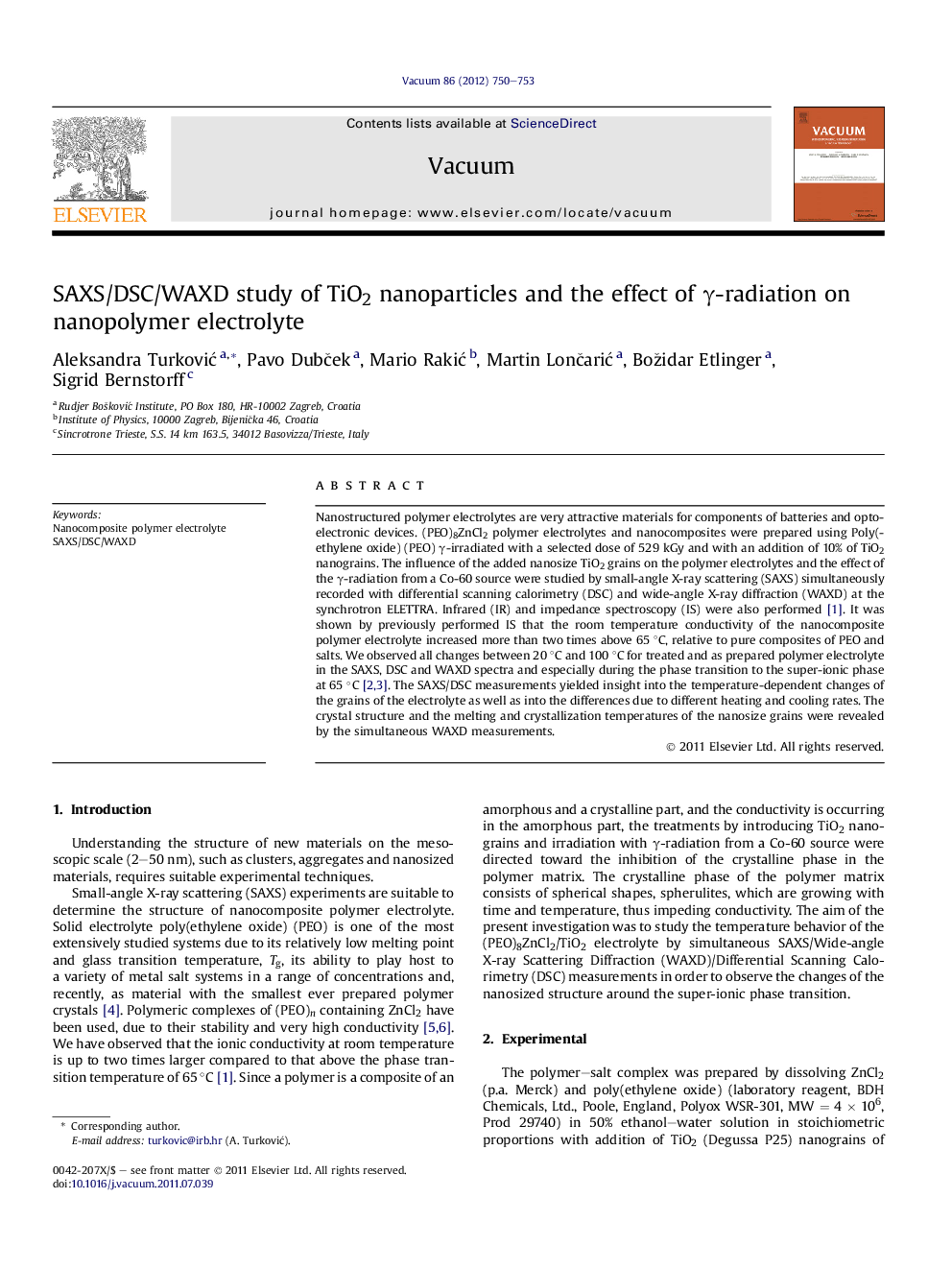| Article ID | Journal | Published Year | Pages | File Type |
|---|---|---|---|---|
| 1688720 | Vacuum | 2012 | 4 Pages |
Nanostructured polymer electrolytes are very attractive materials for components of batteries and opto-electronic devices. (PEO)8ZnCl2 polymer electrolytes and nanocomposites were prepared using Poly(ethylene oxide) (PEO) γ-irradiated with a selected dose of 529 kGy and with an addition of 10% of TiO2 nanograins. The influence of the added nanosize TiO2 grains on the polymer electrolytes and the effect of the γ-radiation from a Co-60 source were studied by small-angle X-ray scattering (SAXS) simultaneously recorded with differential scanning calorimetry (DSC) and wide-angle X-ray diffraction (WAXD) at the synchrotron ELETTRA. Infrared (IR) and impedance spectroscopy (IS) were also performed [1]. It was shown by previously performed IS that the room temperature conductivity of the nanocomposite polymer electrolyte increased more than two times above 65 °C, relative to pure composites of PEO and salts. We observed all changes between 20 °C and 100 °C for treated and as prepared polymer electrolyte in the SAXS, DSC and WAXD spectra and especially during the phase transition to the super-ionic phase at 65 °C [2] and [3]. The SAXS/DSC measurements yielded insight into the temperature-dependent changes of the grains of the electrolyte as well as into the differences due to different heating and cooling rates. The crystal structure and the melting and crystallization temperatures of the nanosize grains were revealed by the simultaneous WAXD measurements.
